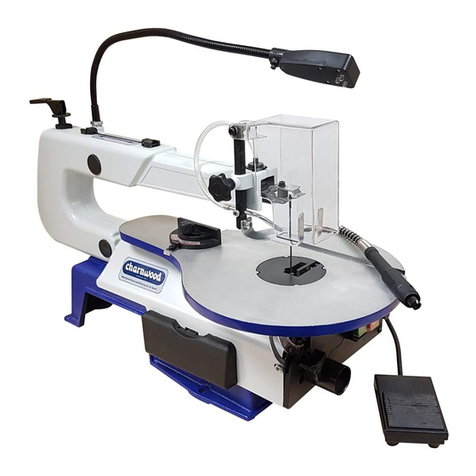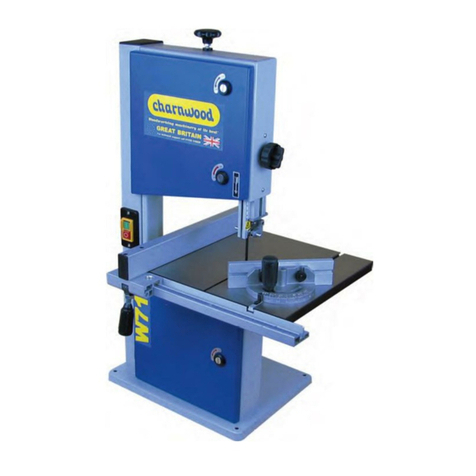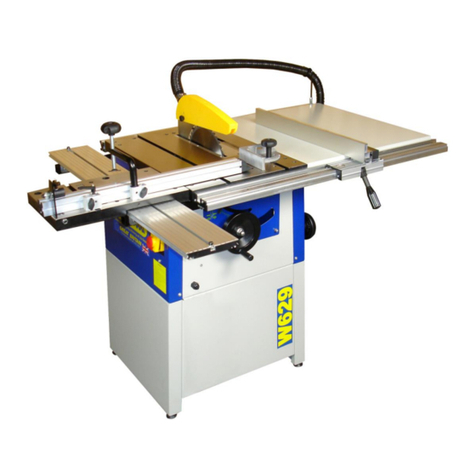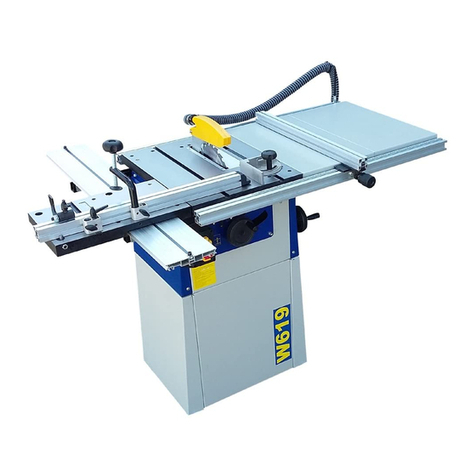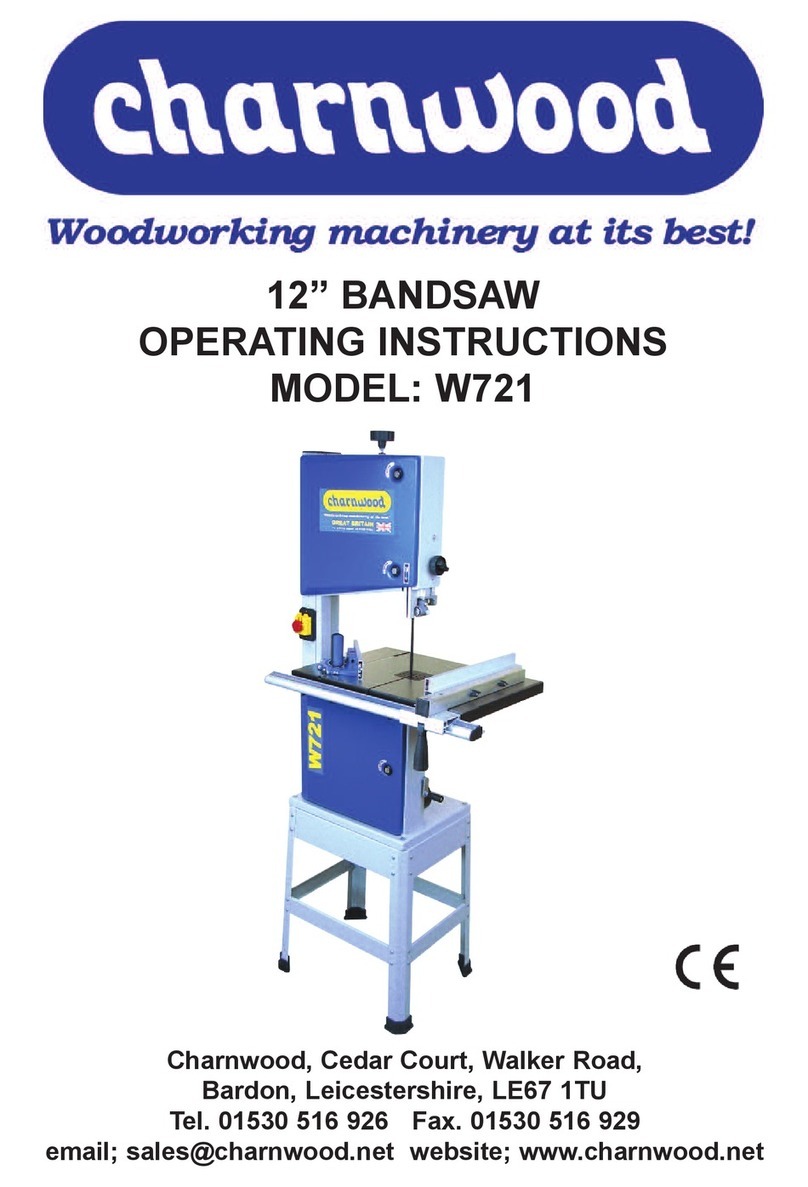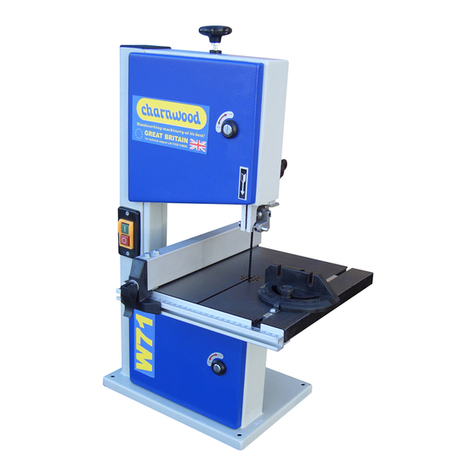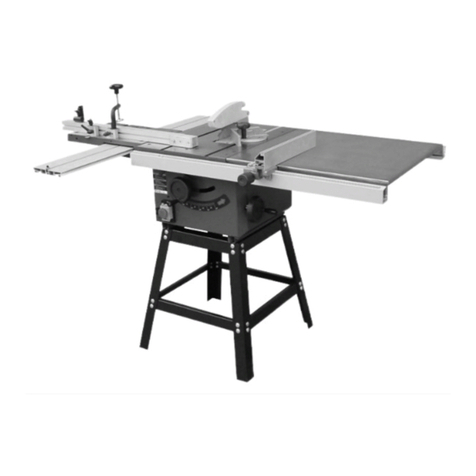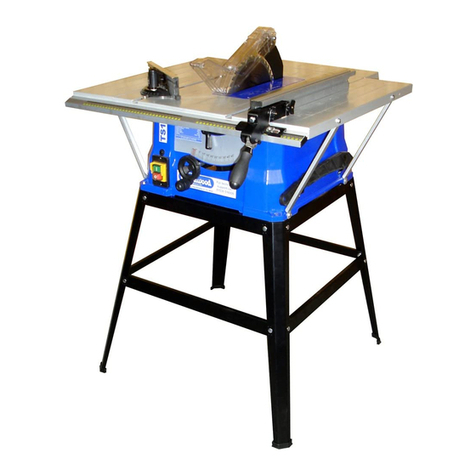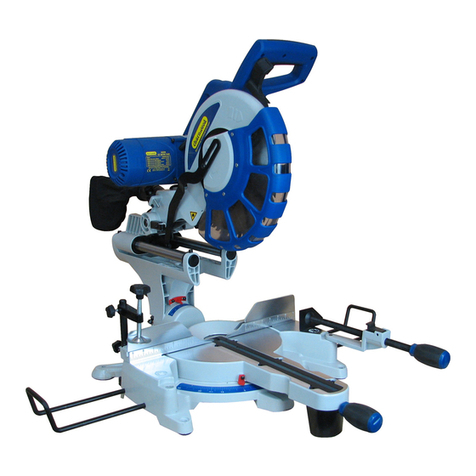Safety ules
As with all machines, there is a certain amount of hazard involved with the use of this circular saw-
bench. Use the machine with the respect and caution demanded where safety precautions are con-
cerned. When normal safety precautions are overlooked or ignored, personal injury to the operator can
result.
Read, understand and follow the safety and operating instructions found in this manual. Know the
limitations and hazards associated with this circular sawbench.
Electrical grounding. ake certain that the machine frame is electrically grounded and that a ground
lead is included in the incoming electrical service. In cases where a cord and plug are used, make cer-
tain that the grounding plug connects to a suitable ground. Follow the grounding procedure indicated in
the local electrical code.
Eye safety. Wear an approved safety shield, goggles, or glasses to protect eyes. (NOTE: Common eye
glasses are not safety glasses.)
Personal protection. Before operating the machine, remove tie, rings, watch and other jewelry and roll
up sleeves above the elbows. Remove all loose outer clothing and confine long hair. Protective type
footwear should be used. Do not wear gloves.
Guards. Keep the machine guards in place for every operation for which they can be used. If any
guards are removed for maintenance, DO NOT OPERATE the machine until the guards are re-installed.
Work area. Keep the floor around the machine clean and free of scrap material, saw dust, oil and other
liquids to minimize the danger of tripping or slipping. Be sure the table is free of all scrap, foreign materi-
al and tools before starting to cut. ake certain the work area is well lighted and that a proper exhaust
system is used to minimize dust. We recommend the use of anti-skid floor strips on the floor area where
the operatornormally stands and that each machine’s work area is marked off. Provide adequate work
space around the machine.
Operator position. aintain a balanced stance and keep your body under control at all times. Do not
stand in line with the saw blade or work piece and do not allow anyone else to do so. Never climb on or
near the saw.
Do not overreach. Use a support table or have a helper or “tailman” take stock away from the back
side of the blade.
Housekeeping. Before turning on machine, remove all extra equipment such as keys, wrenches, scrap,
and cleaning rags away from the saw.
Careless acts. Give the work you are doing your undivided attention. Looking around, carrying on a
conversation, and “horseplay” are careless acts that can result in serious injury.
Disconnect machine before performing any service or maintenance or when changing blades. A
machine under repair should be RED TAGGED to show it should not be used until the maintenance is
complete.
Alignment. Check the alignment of the splitter, fence and miter slot to the blade. A caution decal is
installed on each guard and splitter to remind the operator of the dangers of mis-alignment.
Maintain tools in top condition. Check the saw blade for cracks or missing teeth. Do not use a
cracked or dull blade or one with missing teeth or improper set. ake sure the blade is securely locked
on the arbor.
Hand safety. Keep hands clear of the blade area. Do not reach past the blade to clear parts or scrap
with the saw blade running. Never saw free hand. Avoid awkward operations and hand positions where
a sudden slip could cause your hand to contact the blade.
Safety devices. Always use the splitter, blade guard, push stick and other safety devices for all opera-
tions where they can be used. On operations such as dadoing or molding where the blade guard cannot
be used, use feather boards, fixtures and other safety devices and use extreme caution. Reinstall the
splitter and blade guard immediately after completing the operation that required their removal.
Saw blade rotation. Be sure the saw blade rotates clockwise when viewed from the motor side (left
side) of the machine.
Adjustments. ake all adjustments to the machine and operational setup with the power off. Never
remove the insert with the blade running.
Material condition. Do not attempt to saw boards with loose knots or with nails or other foreign materi-
al, on its surface. Do not attempt to saw twisted, warped, bowed or “in wind” stock unless one edge has
been jointed for guiding purposes prior to sawing.
